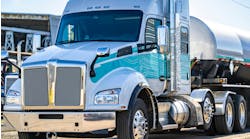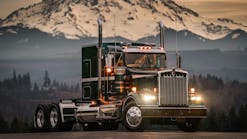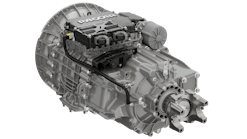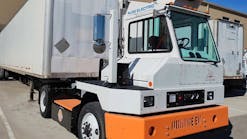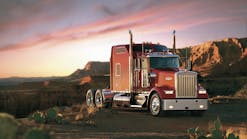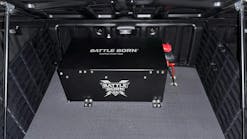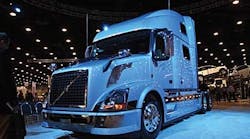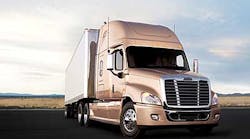Latest from Trucks
THE ROLLOUT of engines that meet revised Environmental Protection Agency regulations is taking a toll on heavy-duty truck quality and customer satisfaction, as customers are reporting more problems with the engines, according to the latest J D Power and Associates 2012 US Heavy-Duty Truck Customer Satisfaction Study.
Overall customer satisfaction with heavy-duty trucks declined to 737 index points on a 1,000-point scale in 2012, compared with 751 in 2011, primarily due to an increase in the number of problems experienced. The study finds that quality of Class 8 trucks that are one model year old has decreased, with problem levels rising 9% to223 problems per 100 trucks (PP100) in 2012, up from 204 PP100 2011. Overall quality is determined by the level of problems experienced per 100 trucks, with a lower score reflecting higher quality. Much of the overall quality decline is attributed to a higher rate of engine- and fuel-related problems, which increased by 14% from 2011 (81 PP100 vs 71 PP100, respectively).
The most problematic engine and fuel problems are driven by technology that is designed to reduce emissions from heavy-duty truck engines.
“Following the revised EPA regulations in 2007,there was an increase in problems and a decline in customer satisfaction, and we anticipated the same thing would happen with the introduction of 2010 EPA-compliant engines,” says Brent Gruber, director of the commercial vehicle practice at J D Power and Associates. “Emission-related technology results in a high rate of problems, particularly with ECM calibration, exhaust gas recirculation (EGR) valves, and engine sensors. The new, more complex engines are resulting in more problems and downtime.”
Vocational trucks
Vocational truck customers experience an average of 2.2 unscheduled maintenance procedures per year, resulting in an average of 7 days of downtime, while on-highway owners report an average of 2.9 unscheduled maintenance procedures, or an average of 7.7 days of downtime.
“Engine reliability has the greatest impact on overall product satisfaction, so it's vital that truck and engine manufacturers work quickly to reduce the number of problems related to the emission technologies,” Gruber says. “The truck brands of European companies have fewer problems, specifically, those related to the technology required to meet the emission standards, because they have been using the technology for years in other markets.”
Gruber explains that since 2008, Europe has had emission standards similar to those enacted in the US market in 2010, so manufacturers that build heavy-duty trucks for that market have the advantage of applying technology proven in Europe in US models. As a result, brands such as Freightliner and Volvo earn above-average satisfaction for engine reliability and dependability, as well as fewer engine- and fuel-related problems than industry average. On average, truck brands owned by US companies experience 22% more engine- and fuel-related problems than their competitors owned by European companies (89 PP100 vs 73 PP100, respectively).
The study measures the satisfaction of primary maintainers of Class 8 heavy-duty trucks that are one model year old in two product segments, on highway and vocational. In each segment, satisfaction is determined by examining six key factors: cab/body, cost of operation, engine, ride/handling/braking, transmission, and warranty.
Highest satisfaction
Freightliner ranked highest in heavy-duty truck customer satisfaction in both the on-highway and vocational segments. In the on-highway category, which evaluated long- and short-haul trucks, Freightliner ranked highest with an index score of 750 and performed particularly well in all six factors. Volvo ranked second (739), while Peterbilt ranked third (736). In the vocational segment, Freightliner ranked highest with an index score of 789, followed by International (766) and Peterbilt (753).
The study also measured satisfaction with service received from authorized truck dealers by examining six factors: service advisor, service delivery, service facility, service initiation, service price, and service quality. Kenworth ranked highest in Class 8 customer satisfaction with dealer service for a second consecutive year. Kenworth, with an index score of 804, performed particularly well across all factors. Following Kenworth in the rankings were Freightliner (802) and Volvo (784).
The 2012 US Heavy-Duty Truck Customer Satisfaction Study is based on responses from 1,725 primary maintainers of one-model-year-old Class 8 heavy-duty trucks. The study was fielded in April and May 2012. ♦
